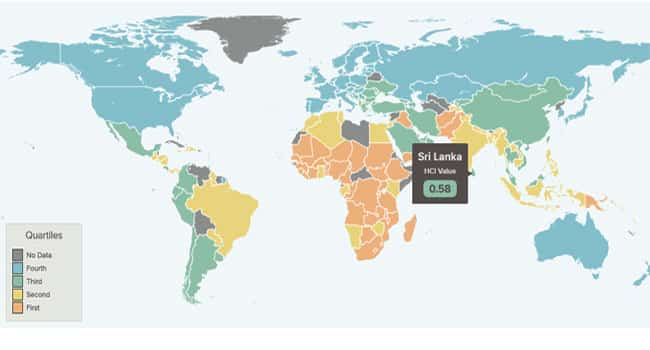The Human Capital Index measures the amount of human capital that a child born today can expect to attain by age 18. It conveys the productivity of the next generation of workers compared to a benchmark of complete education and full health.

- HCI is part of the World Development Report (WDR).
- As part of this report, the World Bank has launched a Human Capital Project (HCP).
- Cross-country metric—the Human Capital Index (HCI).
- Program of measurement and research to inform policy action.
- Program of support for country strategies to accelerate investment in human capital.
What are the Findings ?
- Global Performance: Singapore topped the list while, India was placed at 115th position out of 157 countries, lower than neighboring Nepal, Sri Lanka, Myanmar and Bangladesh.
State Of Human Capital In India (UPSC IAS)
- Human Capital Index: A child born in India today will be 44 % as productive when she grows up as she could be if she enjoyed complete education and full health.
- Probability of Survival to Age 5: 96 out of 100 children born in India survive to age 5.
- Expected Years of School: In India, a child who starts school at age 4 can expect to complete 10.2 years of school by her 18th birthday.
- Harmonized Test Scores: Students in India score 355 on a scale where 625 represents advanced attainment and 300 represents minimum attainment.
- Learning-adjusted Years of School: Factoring in what children actually learn, expected years of school is only 5.8 years.
- Adult Survival Rate: Across India, 83 % of 15-year olds will survive until age 60. This statistic is a proxy for the range of fatal and non-fatal health outcomes that a child born today would experience as an adult under current conditions.
- Healthy Growth (Not Stunted Rate): 62 out of 100 children are not stunted. 38 out of 100 children are stunted, and so at risk of cognitive and physical limitations that can last a lifetime.
